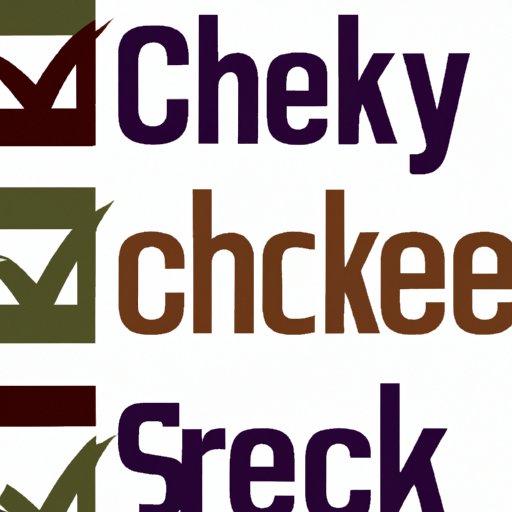Introduction
eCheck is an electronic payment system that allows users to make payments directly from their bank accounts. It is essentially a digital version of a paper check and can be used for payments via the internet. The process of sending an eCheck is simple and secure, making it an ideal payment option for online transactions. This article will explain how eCheck works, the necessary security measures involved, and the pros and cons of using this payment system.
Step-by-Step Guide to Understanding How eCheck Works
Before we dive into understanding how eCheck works, it’s important to note that eCheck payments are only available in the US and Canada. To send an eCheck, both the sender and recipient must have a valid bank account in one of these countries.
Explaining the Process Behind Sending an eCheck
When a user sends an eCheck, they are actually initiating an Automated Clearing House (ACH) payment. An ACH payment is an electronic transfer of funds from one bank account to another. It is similar to a wire transfer but typically takes longer to process. When an eCheck is sent, the sender’s bank first verifies their account information and then deducts the payment amount from their account. Once the payment has been approved, the funds are transferred to the recipient’s bank account.
Describing the Necessary Security Measures
One of the main benefits of using an eCheck for payments is the added security measures. All eCheck payments are encrypted with 128-bit SSL encryption, which ensures the data is securely transmitted between the sender and the recipient. Additionally, all eCheck payments are processed through the Federal Reserve Bank, which adds another layer of security to the process. This ensures that the payment is safe and secure.
Outlining the Steps to Completing an eCheck Transaction
The steps to completing an eCheck transaction are relatively straightforward. First, the sender enters the recipient’s bank account information into the payment form. This includes the routing number, account number, and the payment amount. Next, the sender’s bank verifies the account information and deducts the payment amount from the sender’s bank account. Once the payment has been approved, the funds are transferred to the recipient’s bank account. Finally, the recipient receives confirmation of the payment and the funds are available for use.
Pros and Cons of Switching from Paper Checks to eChecks
Switching from paper checks to eChecks can be beneficial for businesses and consumers alike. Here are some of the advantages and disadvantages of using eChecks for payments.
Advantages of eChecks
The biggest advantage of using eChecks is the convenience. According to a survey conducted by the National Automated Clearing House Association, 83% of respondents said they prefer using eChecks over paper checks because of the ease and convenience. Additionally, eChecks are faster than paper checks and can be processed within minutes. This makes them an ideal payment option for businesses who need to receive payments quickly.
Another benefit of eChecks is the cost savings. Traditional paper checks require additional processing fees and postage, whereas eChecks do not. This means businesses can save money on processing fees and postage costs when using eChecks for payments. Furthermore, eChecks are more secure than paper checks, as the sender and recipient’s information is encrypted.
Disadvantages of eChecks
The main disadvantage of using eChecks is that they are only available in the US and Canada. This means businesses outside of these countries cannot accept eChecks as payment. Additionally, while eChecks are generally secure, there is still a risk of fraud. Businesses should take extra precautions when accepting eChecks, such as verifying the sender’s information before processing the payment.
Conclusion
eCheck is an electronic payment system that allows users to make payments directly from their bank accounts. It is an efficient, secure, and cost-effective way to send and receive payments. The process of sending an eCheck is simple and straightforward and requires minimal effort from the sender. The necessary security measures ensure that the payment is safe and secure. While there are some drawbacks to using eChecks, such as the limited availability in certain countries, the advantages far outweigh the disadvantages.
In conclusion, eChecks are a great payment option for businesses and individuals who want a secure, efficient, and cost-effective way to send and receive payments. With the added security measures and convenience, eChecks are an ideal choice for those looking to switch from paper checks to digital payments.
(Note: Is this article not meeting your expectations? Do you have knowledge or insights to share? Unlock new opportunities and expand your reach by joining our authors team. Click Registration to join us and share your expertise with our readers.)
